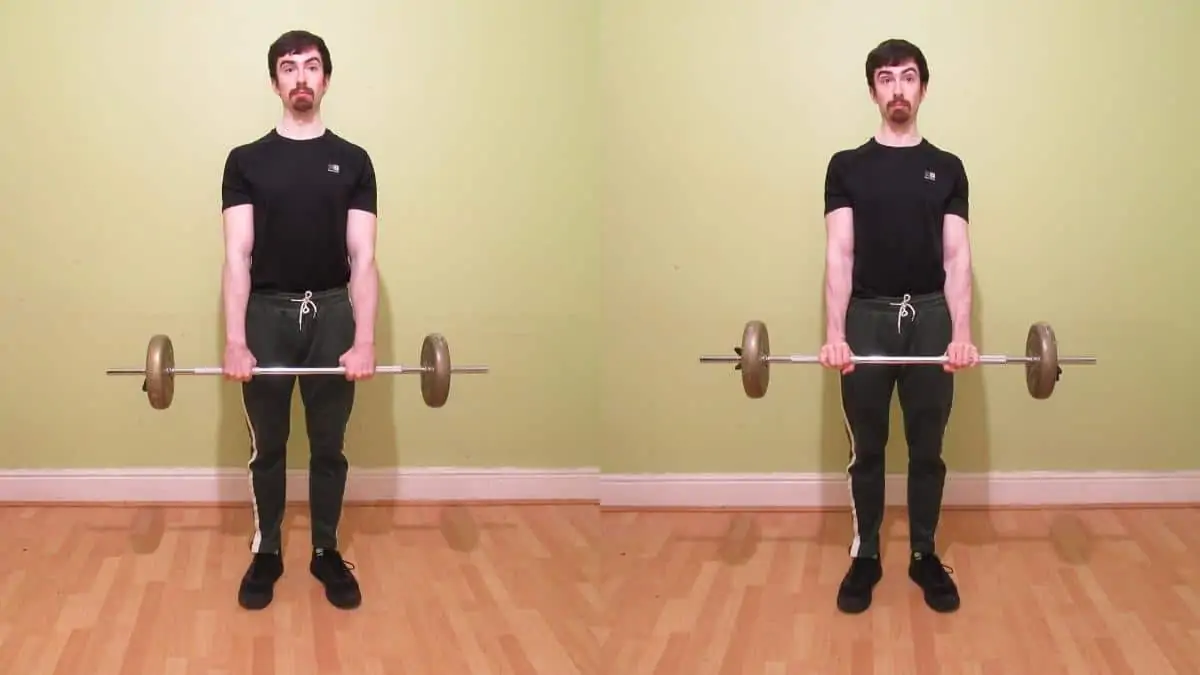The standing reverse wrist curl is one of my all-time favorite forearm exercises. It’s convenient to set up, and it helps to build even-looking forearm muscles by working the often neglected wrist extensors.
Related post: kettlebell exercises for forearms
How to do standing reverse wrist curls
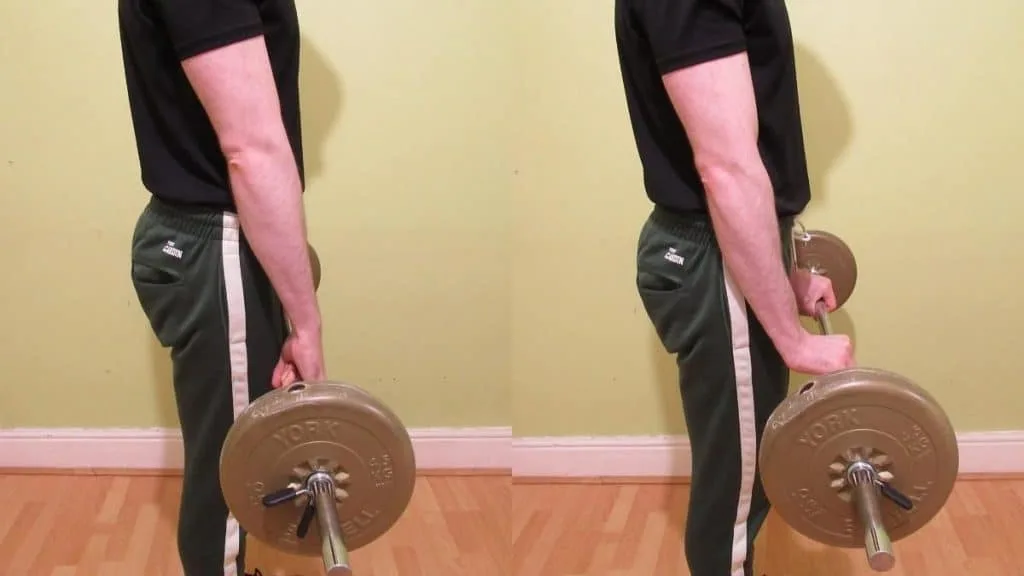
You can do standing reverse wrist curls with an Olympic bar and even with dumbbells. However, I prefer grabbing a light fixed barbell so that I don’t have to change the weights around when I superset this exercise with the regular barbell wrist curl.
- Load a reasonably light amount of weight onto a barbell (or just grab a preloaded bar).
- Hold the barbell in front of you with a shoulder-width overhand grip. Your elbows should be fully locked out.
- Extend your wrists away from your body and squeeze the tops of your forearm.
- Hold the contraction for a second, and then slowly lower the bar back down.
- Repeat for 3-4 sets of 15-20 reps.
Standing reverse wrist curl tips
The standing reverse wrist curl is, in theory, a simple exercise. However, any time that you give a novice lifter a barbell, there’s a decent chance that they’ll mess up the technique. So to get the most from each set, take note of these training tips and apply them in your next workout.
Always control the bar
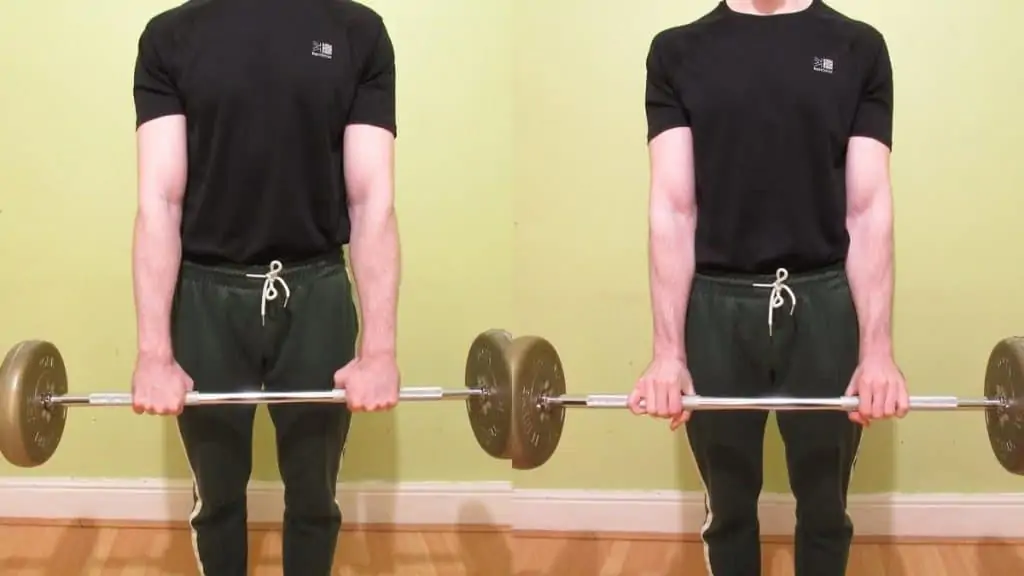
The range of motion (ROM) during a forearm curl is tiny. [1] So if you don’t control every part of the rep, then you’re throwing away potential muscle growth.
So instead of using momentum to lift heavy weights, treat this drill for what it is: an isolation exercise just for the forearms.
Make sure that your forearms are controlling the bar at every point during the rep. In practice, this might require you to slow down your reps initially so that you can really feel your lower arms working.
Once you develop good control over the weight, you can perform your reps at a regular tempo and focus more on progressive overload. Just be aware that since the wrist extensors are tiny muscles, it’s unlikely that they’ll gain a significant amount of strength. [2]
Squeeze your extensors
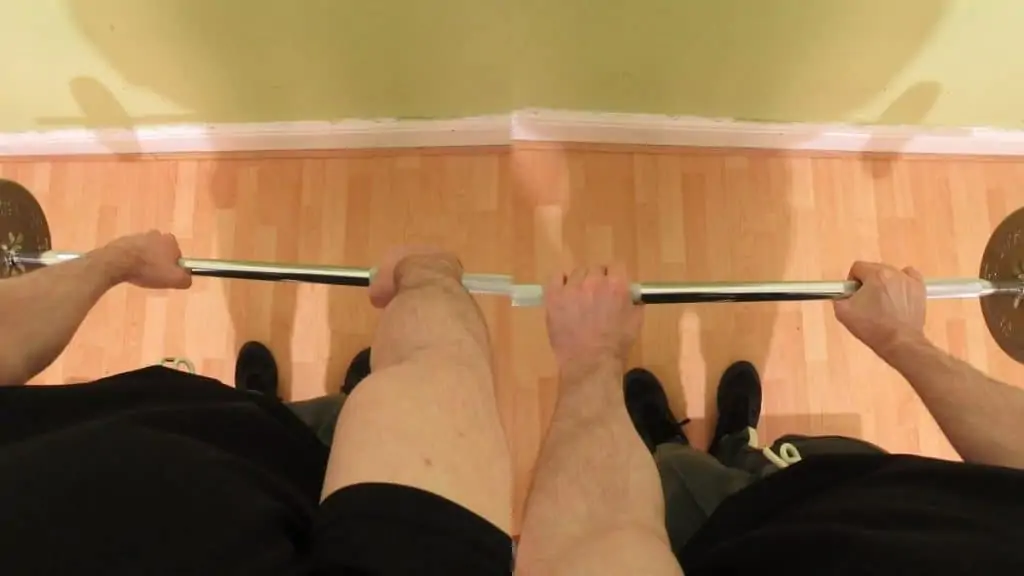
The contraction is the hardest part of standing reverse barbell wrist curls, so make sure to squeeze the tops of your forearms to take full advantage of each rep.
Holding the contraction will also improve your lower arm strength. How so?
Well, if you can get strong where you’re meant to be weakest, i.e., at the most challenging point in the rep, then the rest of your reps will feel really easy.
Read more: shoulder and forearm training
Use high reps
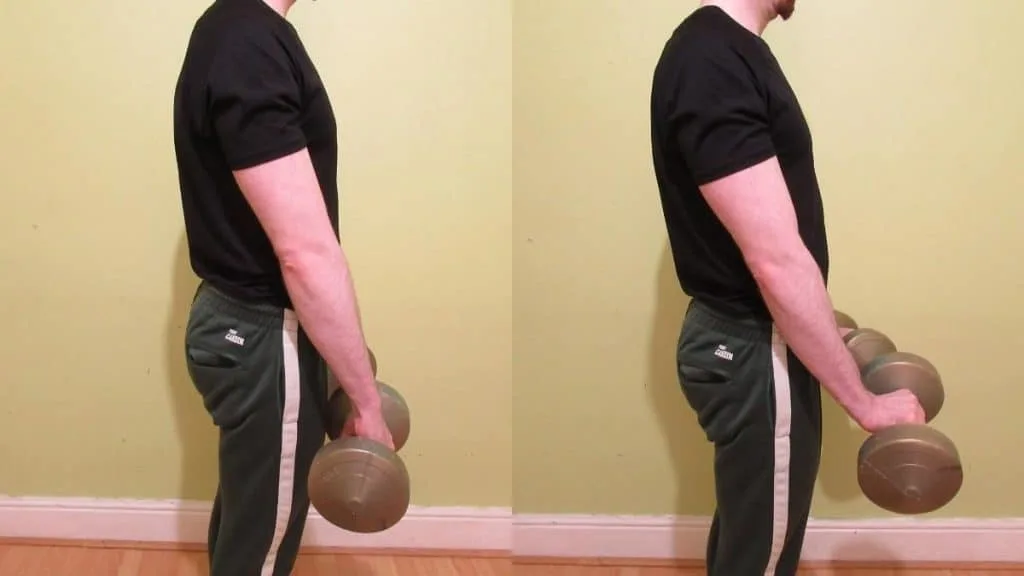
As mentioned, the ROM for wrist curls is very small indeed. So in order to get enough time under tension, you practically have no choice but to use high reps.
Save the heavy weights for farmer’s walks. Wrist curls, as the name suggests, work a small and very vulnerable joint. So by lifting heavy, you could actually be putting your wrist health in jeopardy. This is not a mistake that you want to make, considering how much we rely on our wrists in so many other pulling and pressing exercises.
Standing reverse wrist curl benefits
Although you have to use strict form to realize these benefits, the standing reverse forearm curl certainly has its advantages over the alternatives, which we’ll explore in the next section of this tutorial.
Proportional lower arms
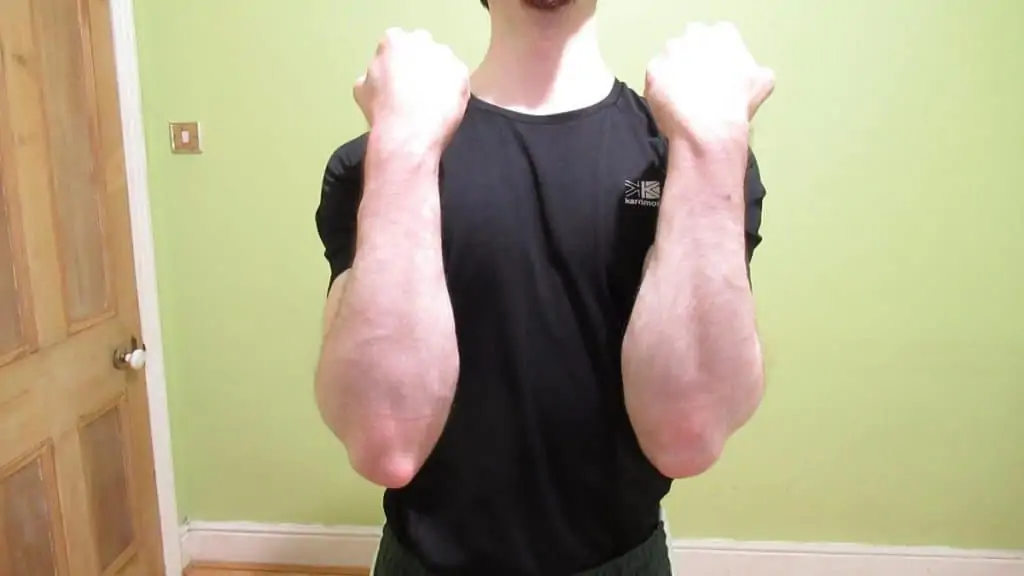
Many lifters perform exercises for the brachioradialis muscle when they do hammer curls and reverse curls during their arm day.
Also, most people generally do work for their forearm flexors via regular standing forearm curls.
However, many people forget all about the extensors. And this is a mistake. If you want your lower arms to look impressive from every angle, then you need to do some kind of wrist curl in a reverse motion. It’s that simple.
Compound movements can and do work the forearm extensors. But for the fastest and best results, you need to isolate these muscles so that they receive full stimulation as prime movers.
Stronger grip
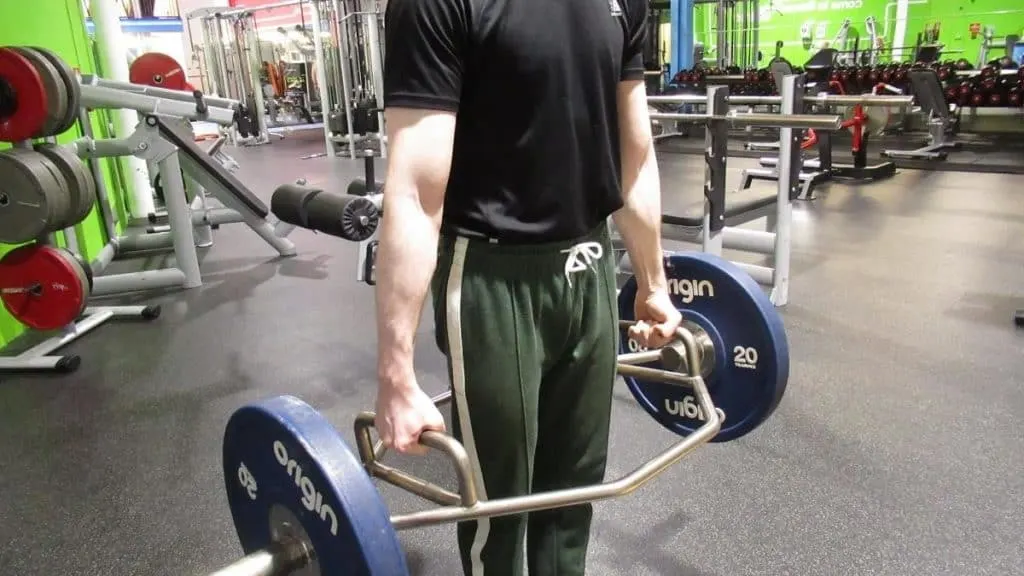
As mentioned, many people already have decently meaty forearm flexors. But their extensors are comparatively much weaker.
Unfortunately for them, this means that they have a clear weak link. As such, their extensors will often fatigue before their other lower arm muscles because they simply don’t have the strength and endurance to perform important grip exercises.
So not only do muscle imbalances look bad, it turns out that they negatively impact your strength, too.
Improves your forearm definition
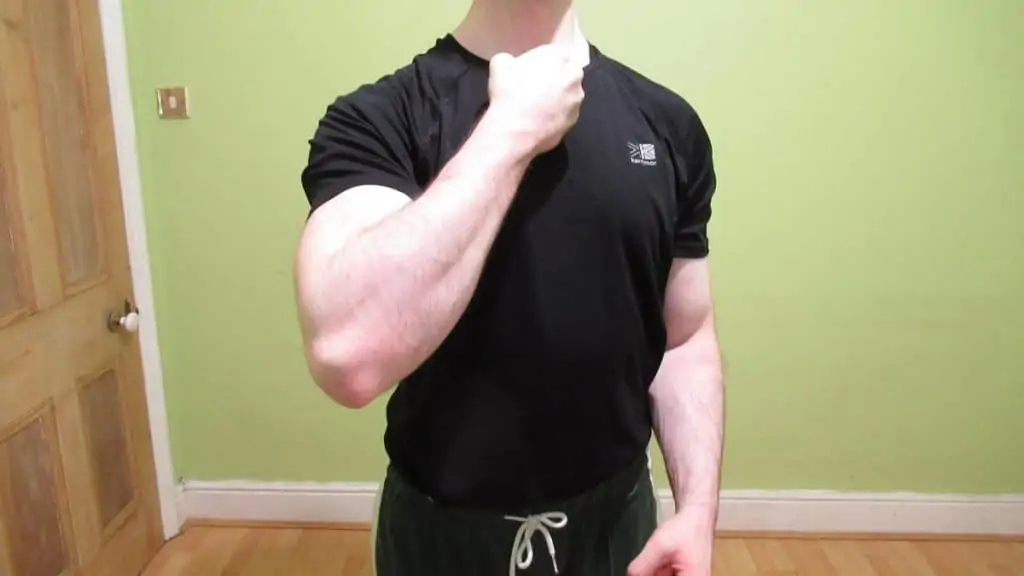
The wrist extensors consist of numerous small muscles, many of which lie close to the surface of the forearms. Therefore, when these muscles are well developed, you’ll often see striations in the muscles themselves, which is the hallmark of a person with strong arms.
So if you want good lower arm definition, then make sure to do standing reverse forearm curls to really hone in on these small muscles.
Also, since most people (especially males) store minimal body fat on their arms, you can achieve impressive muscle definition in this area even if you don’t have ripped abs. [3]
Greater gym efficiency
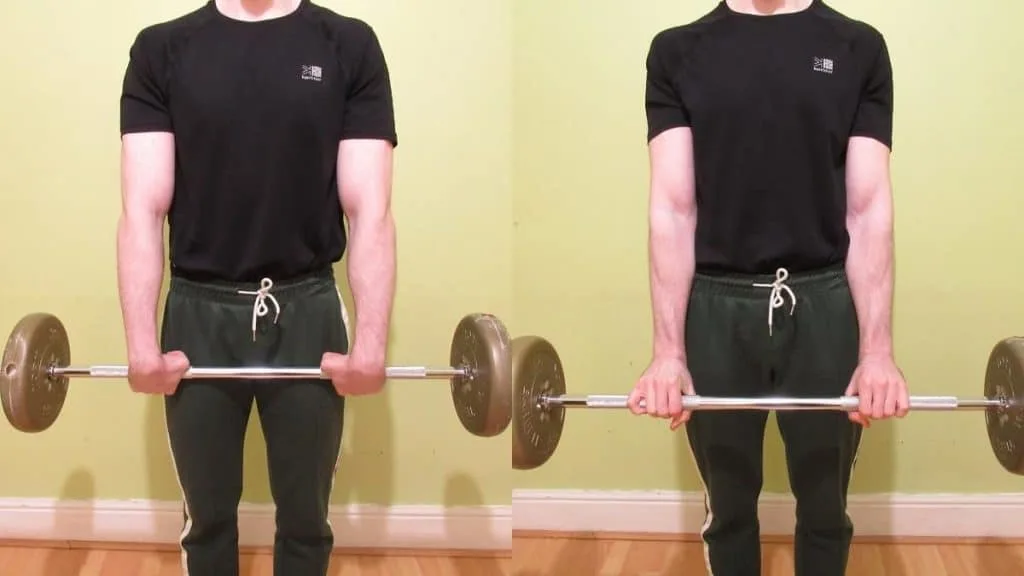
Other drills like the wrist roller exercise are indeed very effective. The problem is that they’re just not that convenient to set up.
But with standing reverse wrist curls, you literally just pick up a fixed barbell or a pair of light dumbbells and start lifting.
This efficiency might not seem like a big deal, but since many trainees are often tempted to skip forearm training altogether, I like to recommend exercises that have you spend more time on the actual lifting rather than on any kind of cumbersome setup.
Standing reverse wrist curl alternatives

Check out these alternative exercises if you want to add variety to your workout routine. Each link takes you to a full tutorial where you can learn the proper form and gain access to exercise-specific training tips.
- Barbell reverse wrist curls
- Behind the back barbell wrist curls
- Cable forearm curls
- Dumbbell wrist curl
- EZ bar forearm curl
- Forearm plate curl
- Forearm twist
- Palms down dumbbell wrist curls
- Single dumbbell forearm curl
The verdict on standing reverse wrist curls
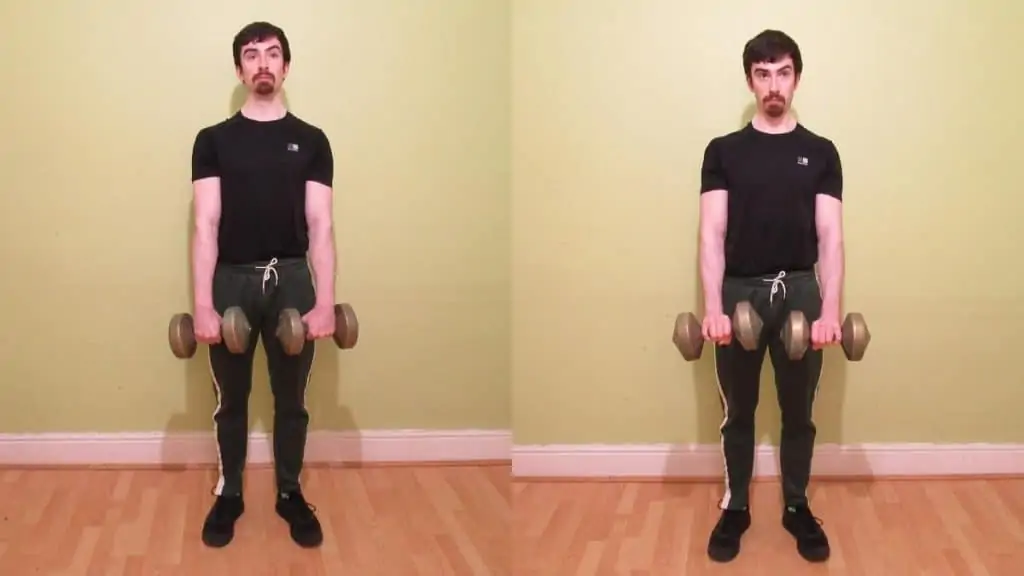
Due to its straightforward setup and simple lifting technique, the standing reverse wrist curl is one of the most effective exercises for strengthening the forearm extensors.
To save time, you can pair it with regular wrist curls, which will result in a very potent muscle pump due to the accumulation of lactic acid.
Overall, just make sure to stick to high reps so that you get enough time under tension. From there, focus on form over weight because, as I said, the extensors don’t have much growth potential compared to other muscles, so it’s not like you’ll be able to gain significant strength while maintaining the same reps and quality of form.
References
- Exercise Methods Notebook #20: Reverse Wrist Curls. (1985, August). The Strength & Conditioning Journal. https://journals.lww.com/nsca-scj/Citation/1985/08000/Exercise_Methods_Notebook__20__Reverse_Wrist_Curls.17.aspx
- Hägg, G. M., & Milerad, E. (1997). Forearm extensor and flexor muscle exertion during simulated gripping work — an electromyographic study. Clinical Biomechanics, 12(1), 39–43. https://doi.org/10.1016/s0268-0033(96)00049-6
- Gallagher, D., Heymsfield, S. B., Heo, M., Jebb, S. A., Murgatroyd, P. R., & Sakamoto, Y. (2000). Healthy percentage body fat ranges: an approach for developing guidelines based on body mass index. The American Journal of Clinical Nutrition, 72(3), 694–701. https://doi.org/10.1093/ajcn/72.3.694

